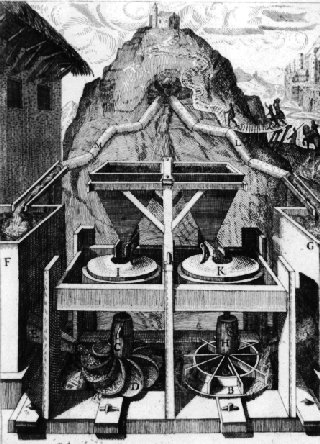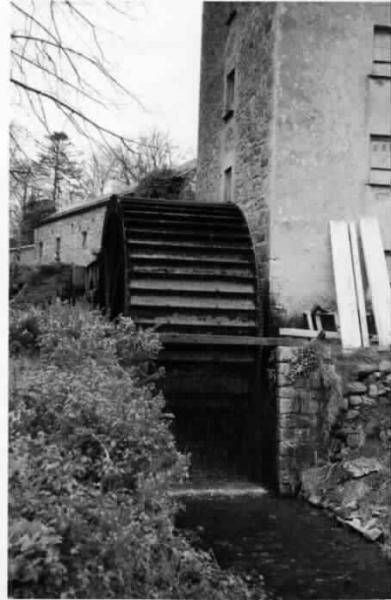18th C Water Wheels
Today, we talk about the last water wheels. The University of Houston's College of Engineering presents this series about the machines that make our civilization run, and the people whose ingenuity created them.
Around 1750, Louis XV's mistress, Madame de Pompadour, wanted a water supply for her chateau at Crécy. The job of providing it fell to the noted French mathematician Antoine de Parcieux.
Why a mathematician? Well, 18th-century rationalism was just catching up with the medieval water wheel in 1750. Power-producing water wheels took many forms, but the field had narrowed to two types by then -- overshot and undershot wheels. A stream was directed beneath an undershot wheel, so the water's velocity forced it to turn. A stream entered above an overshot wheel. That way the weight of water falling through its blades forced the wheel to turn. The 18th century was marked by a maniacal drive to harness more and more power for industrial use. So people badly wanted to know which water wheel would give the most power.
Parcieux correctly saw that the overshot wheel would produce more power for the pumps at Crécy, but his calculations were in error, and his experiments were pretty crude.
Isaac Newton had given us the intellectual apparatus for analyzing the water wheel in 1687, and the people who undertook to do these analyses form a roll call of the great mathematicians and scientists in the mid 18th century -- people like Euler and Bernoulli.
But it was finally the towering figure of John Smeaton who put the question to rest. Smeaton was the prototype of the 18th-century engineer. He designed the first successful Eddystone Lighthouse, he greatly improved Newcomen's steam engine, he designed windmills. And, in 1754, he ran a systematic set of scientific experiments that made it clear the overshot wheel was better. About the same time, Euler's son Johann came to the same conclusion using a correct analysis.
This was just 15 years before Watt patented a superior steam engine in 1769. It's been argued that Smeaton slowed the spread of steam power with his fine work on the water wheel. But that was like slowing the advance of a Sherman tank with a cardboard barricade. The steam engine soon made the water wheel obsolete.
But the body of theory these people gave us reappeared in the 19th century -- in modern power-producing water-turbines. They never did slow the spread of steam power. But today water turbines give us a nice part of the energy we use, by cleanly and cheaply taking it from rivers and waterways.
So the next time you visit Grand Coulee or Hoover Dam, try not to think about King Louis XV indulging Madame de Pompadour with running water for their love-nest.
I'm John Lienhard, at the University of Houston, where we're interested in the way inventive minds work.
(Theme music)
Reynolds, T. S., Scientific Influences on Technology: The Case of the Overshot Waterwheel, 1752-1754, Technology and Culture, Vol. 20, No. 2, April, 1979, pp. 270-295.

(Image courtesy of the Special Collections Library, University of Kentucky)
A late 17th-century conception of a vertical water wheel from Böckler's Theatre of New Machines. Notice that the concept of a water turbine is completely missing. The potential energy on the mountain top is wasted when the water is dumped in the low sump which supplies the wheel.

(Photo by John Lienhard)
A 19th-century water wheel still grinding grist in County Claire, Ireland